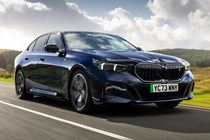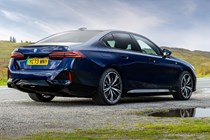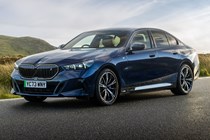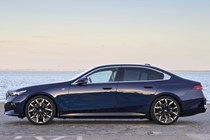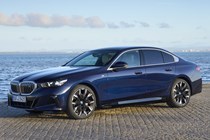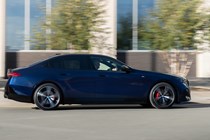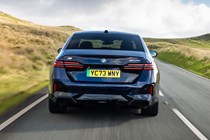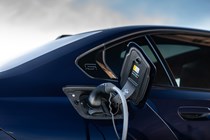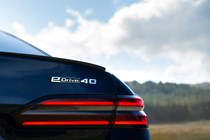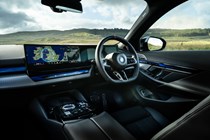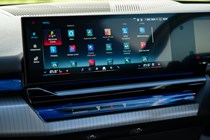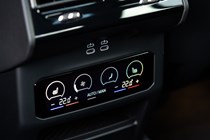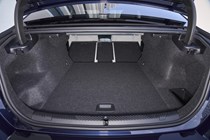
BMW i5 engines, drive and performance
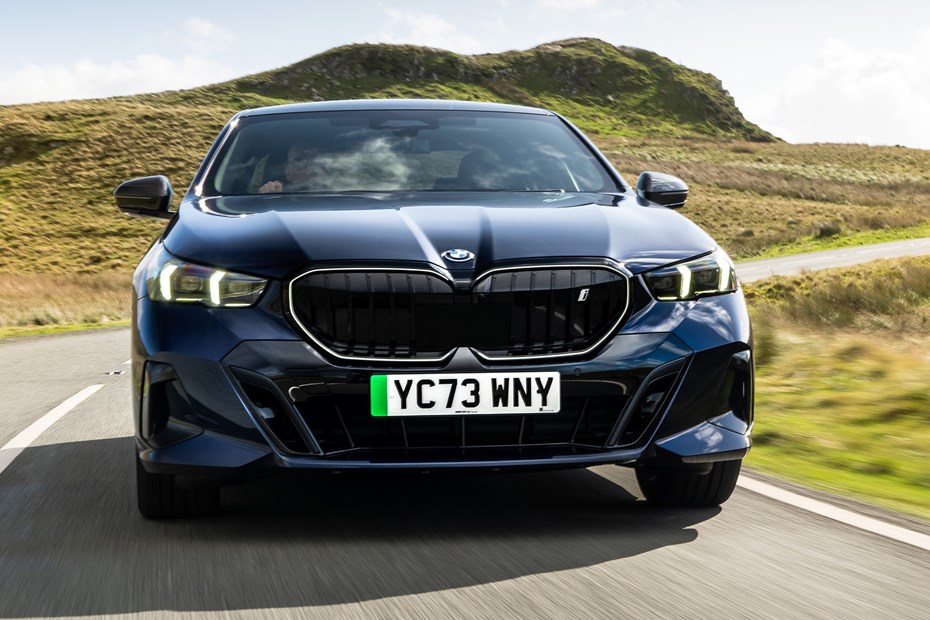
- Choice of two electric powertrains
- One brisk, one absolutely rapid
- Precise steering and handling
Electric motors
The entry-level BMW i5 eDrive40 is powered by an 81.2kWh battery and a single electric motor mounted on the rear axle with 340hp and 400Nm of torque. That gives the saloon a 0–62mph time of 6.0 seconds dead, making it slightly quicker in a straight line than the Volkswagen Golf GTI. It runs out of shove as you pass 60mph, but there’s just enough power in reserve for decisive overtaking.
Above that, there’s the M60. It features the same battery pack, but it gains an extra electric motor on the front axle, boosting power and torque to 601hp and 795Nm of torque, slashing the i5’s 0–62mph time down to 3.8 seconds. That’s properly quick, but the Mercedes AMG EQE 53 and 1,000hp Tesla Model S Plaid are faster still.
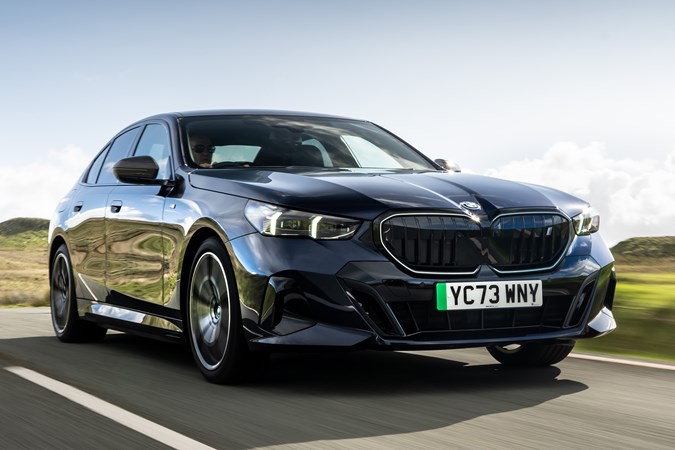
Still, we think BMW’s more conservative approach to the i5’s power output is perfectly judged. That’s because the car’s chassis can control the amount of power the motors are subjecting it to, so it never feels intimidating. The Tesla is a little bit manic – there are very few occasions in the UK you can use full throttle without putting yourself at risk of having an enormous accident.
But the BMW i5 M60 has genuinely enjoyable performance. Its 40–70mph acceleration is truly stunning – and because it has a sensible amount of power for its grip levels, you can easily get all 600 of its ponies to the tarmac without the traction control or motor control systems stepping in to halt your charge. It’s excellently judged for UK roads.
What’s it like to drive?
BMW knows how to make an electric car that handles well – we saw that with the i4. The i5 is just as good with quick, reassuringly precise steering and a chassis that just seems to go wherever you point it, no matter how fast you’re travelling.
Compared with the rather woolly Mercedes EQE or the very remote-feeling Teslas, the i5 is a real pleasure to drive. It does a good job of controlling body movements over undulating roads and doesn’t lean over in bends too much either. There’s a definite rear bias to both the eDrive40 and M60 models – so if you hurl them at a bend with your foot buried in the firewall, the electronic nannies will step in to stop both cars from chasing their tails. However, once you turn the assists off, both cars will play the hooligan, just as a 5 Series should.
Adaptive suspension with rear-wheel steering is optional on the 40 and standard on the M60. The tech helps the i5 feel a bit more agile and a lot more manoeuvrable in tight spots, but it doesn’t feel as nervous or twitchy as the equivalent technology fitted to the Mercedes EQE.
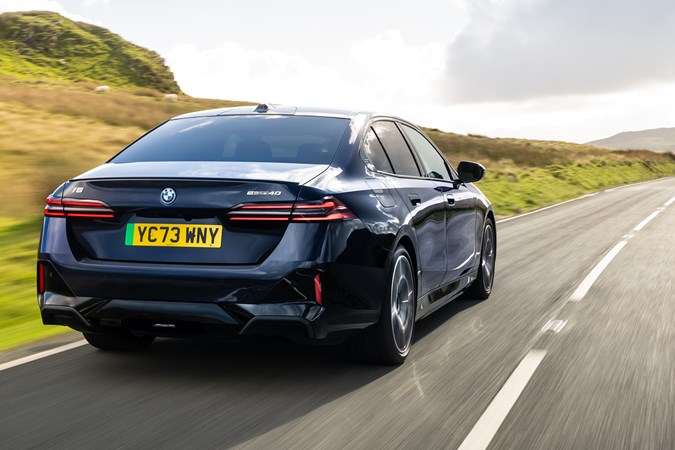
M60 models go further with the optional M Adaptive Suspension Pro that incorporates active anti-roll bars. These reduce body roll even further, although you are still aware of the i5’s bulk under braking and when changing direction.
But it is, to be fair, quite a large car. The new 5 Series has grown by 3cm in width and 10cm in length compared to the old model and it has a higher window line and bonnet line which reduce visibility. As a result, it feels very large, especially around town, and that doesn’t inspire a lot of confidence when you’re trying to thread it through a tight gap.
It’s a highly accomplished motorway cruiser, though. The suspension is quite firm, to cope with the weight of the battery pack, but it’s never uncomfortable or uncontrolled – and on faster roads it effectively irons out most imperfections. Compared to the softer but far more wallowy EQE, it’s a far more pleasant thing to drive on the UK’s pockmarked roads.


